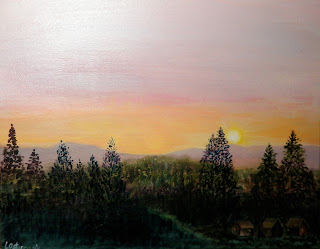Blue Mountains: Native Americans referred to the Catskills as
Onteora--- Land in the Sky, while the first European settlers along the
Hudson River knew them as the Blue Mountains.
In his epic work, The Catskills:
From Wilderness to Woodstock, the late Alf Evers wrote, "They are
commonly known by the name of the Blue Mountains, on account of a blueness or
haze which they present to the eye when seen from a distance." It wasn't until the nineteenth century
that these mountains, and the region, became known as the Catskills, a
representation Evers credits to the tales of Washington Irving and the legendary
Catskill Mountain House.
Over
time the mountains would inspire a group of landscape artists loosely known as
the Hudson River School with Thomas Cole among them. In Picturesque
Ulster R. Lionel De Lisser quoted Cole as saying, "Must I tell you that neither the Alps, nor the Apenines (sic), no nor
Etna itself, have dimmed in my eyes the beauty of our own Catskills." As recent as the year 2000 the late Thomas
Locker published a slender book of Catskill landscapes appropriately titled, In Blue Mountains: An Artist’s Return to
American’s First Wilderness.
Yes,
much has been recorded about these mountains and this region--- America’s first
wilderness, known for its rich history, woody summits, chaste rivers, cherished
forests, outdoor recreation, and treasured art.
On occasion these mountains towering over New York City’s Ashokan
Reservoir still appear “blue” as seen in the landscape below, perhaps just the
way early settlers observed them from afar.


















